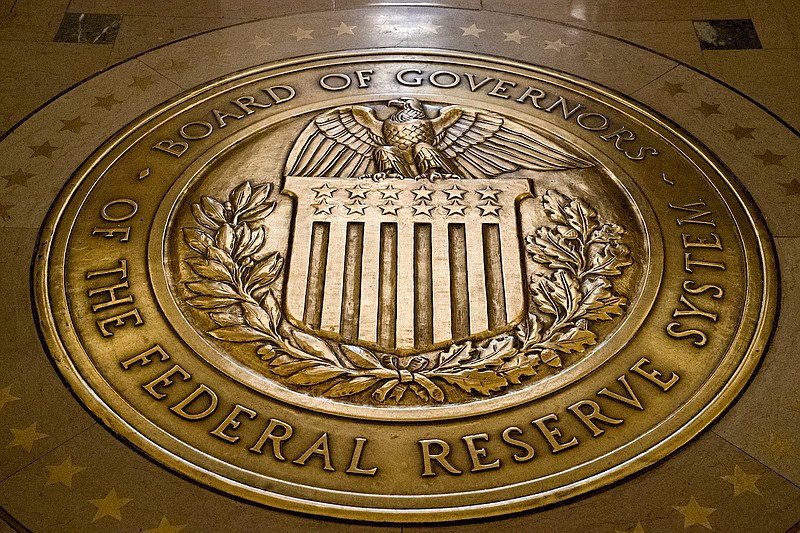Modulation of interest rates is the primary tool used by central bankers to stimulate the economy during a recession and to retard growth to subdue inflation. But since the global financial crisis, the Fed has employed another somewhat controversial wrench that is proving more challenging to put back in the toolbox: its massive portfolio of bonds.
In response to the Great Recession of 2008, the Federal Reserve slashed short-term interest rates to zero, to little effect. Opposed for good reason to forcing rates to go negative, the Fed launched an untested alternative to bootstrap growth. Known as "quantitative easing" or QE, it involved buying Treasury bonds (and eventually mortgage-backed securities) and holding them on the Fed's balance sheet in exchange for cash deposits in the reserve accounts banks held at the Fed. These reserves were then available for banks to lend to commercial customers. Between 2008 and 2014, the balance sheet swelled from $900 billion to over $4 trillion.
Economists openly debated the efficacy of this innovative initiative, and specifically worried about how to ultimately reverse the process. And for good reason: when Chairman Ben Bernanke hinted in 2013 that he might begin winding down the pace of bond purchases, the market pitched a fit that became known as the "taper tantrum" and the reduction was postponed.
The balance sheet finally began slowly shrinking in 2018 until COVID slammed the brakes on the economy two years later. This time the Fed wasted no time in taking QE to another level, more than doubling its bond holdings again to nearly $9 trillion. Since last May the portfolio has been allowed to shrink very modestly but still exceeds $8 trillion.
Consideration of the Fed's balance sheet has heretofore been largely academic, and many officials believed they could reduce the holdings at any time. That is about to change.
The Federal Reserve System is not a direct agency of the government and receives no taxpayer funding. It is self-supporting through the collection of fees from member banks as well as interest income from its bond portfolio. But it is not a for-profit institution, and by law must transfer any operating profits each month to the U.S. Treasury. Every year since 1915, the central bank has generated an operating surplus for the Treasury that has effectively gone into the till to reduce the deficit. Congress routinely incorporates anticipated profits from the Fed as one of its many budget gimmicks to make the fiscal picture appear brighter (less dark), and in recent years these remittances have been quite large. In 2021, the Fed transferred profits of $109 billion to the Treasury.
No more. Recall that the Fed acquired its cache of fixed-rate bonds when yields were historically low. Since last year, with rates rising sharply, interest payments it must pay on bank reserves have surged while income on the balance sheet portfolio has remained static. So far this year the losses total $38 billion and stand to grow. These cumulative losses, called "deferred assets", must be eventually recovered from future operating surpluses before resuming payments to the Government. This is likely to take some time, possibly several years. And while not a direct expense to taxpayers, the cessation of remittances has the effect of increasing the deficit.
Aside from the large and prolonged operating losses, the central bank faces another less noted complication with reducing the balance sheet. The Fed has a bit of a Silicon Valley Bank problem: large paper losses on the bonds it holds.
Although a U.S. government bond pays a fixed face or par value at maturity, its market value in the interim fluctuates with changes in market interest rates. As most ordinary investors have experienced, the value of their bonds declines (on paper) when rates rise, hence the 13% haircut to bond values in 2022. So too with the massive bond portfolio at the Federal Reserve, whose market value may have fallen by nearly a trillion dollars. And while they are not required to adjust the values to market, they would recognize substantial losses on any bonds sold prior to maturity, exacerbating the growing operating losses. This is clearly a limiting factor in how rapidly the Fed can unwind its QE program, a possibility that was anticipated but judged to be the lesser risk compared with inaction during a crisis.
Unlike commercial banks, the Federal Reserve cannot go broke or require a bailout, since it has the capability to create offsetting assets and liabilities in theoretically unlimited amounts. However, there exists the potential for distortion of private capital allocation if the central bank holds too large a proportion of the outstanding paper. And perhaps more ominously, there is heightened political risk attached to widely reported Fed losses. In the extreme, legislators could alter or eliminate the critical independence of the Federal Reserve system. Short of failing to raise the debt ceiling, it's hard to conjure a more frightening image than Congress exercising control over monetary policy.
Most economists understood that unwinding QE could be challenging, but believed extraordinary measures were justified to deal with two existential crises when interest rate policy was exhausted. Now that rates are on the march, the next few years will determine whether this great experiment rewrites the economic textbooks.
Christopher A. Hopkins is a chartered financial analyst (CFA) and co-founder of Apogee Wealth Partners.
